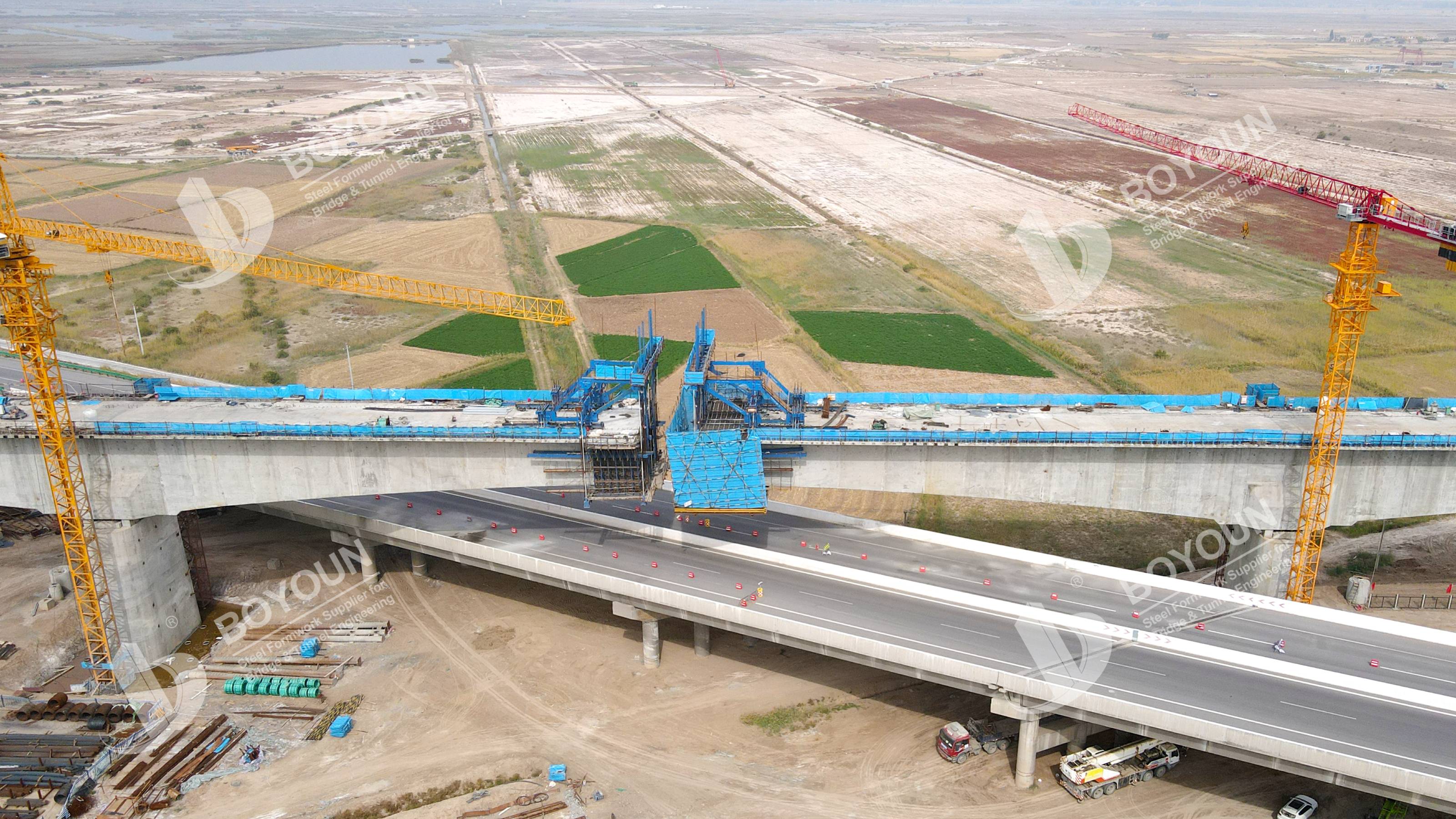Bridge engineering is the foundation of transportation network construction and is essential for efficient logistics circulation, which is of great significance to social development. With continual advancements in construction technology, the construction technology of long-span continuous bridges have become increasingly popular due to its higher safety, applicability, reliability and economy. In this article, we will introduce the construction technology of long-span continuous bridges to provide a reference for improving the construction quality of road and bridge projects.

Long-span continuous bridges are bridge projects that primarily consist of continuous rigid frame bridges. They are modern bridge structures developed on the basis of continuous beams and effectively utilize the structural system of consolidation between piers and beam bodies. Therefore, the main beam in long-span continuous bridge projects is a continuous beam body, and the beam body is directly consolidated with the pier, making the stress condition of this type of bridge change more obviously and is a comprehensive manifestation of continuous beams and T-shaped rigid frame bridges. Long-span continuous bridges have a more stable stress structure, which is mainly reflected in the following aspects.
(1) Effectively reduces the negative bending moment at the pier top. Since the beam body of a long-span continuous bridge is directly consolidated with the pier, the upper and lower structures of the bridge jointly bear the load, significantly improving the bearing capacity of the bridge and reducing the negative bending moment at the pier top.
(2) Flexible piers are generally used in the construction of long-span continuous bridges, which improves the bearing capacity of the bridge, enables the bridge to withstand large load changes, and enhances its safety and reliability of the bridge.
(3) The stress structure of long-span continuous bridges is more stable and reasonable. Hence, this type of bridge has stronger seismic performance, torsional resistance performance, etc., which significantly improves the overall performance of the bridge. In addition, long-span continuous bridges also have obvious defects. For instance, during the construction process, the shrinkage and change of concrete with temperature changes and the uneven settlement of piers and abutments may all lead to the generation of additional internal forces in the bridge, which in turn has a certain impact on the stability of the bridge structure.
Long-span continuous bridges are extremely widely used in road and bridge projects. The characteristics of their construction technology are mainly reflected in the following aspects:
(1) Foundation construction, including large caissons, deep water caps, and underground continuous wall construction. In large caissons, strengthening of positioning and measurement work is necessary to ensure the stability and safety of the caisson construction, including processes such as foundation cleaning and capping, foundation treatment, and sinking construction. Deep water cap construction is greatly impacted by water flow and pressure, and can generally be divided into two modes: steel hanging box and steel sleeve box. Underground continuous wall construction is the foundation of bridge construction and mainly plays the role of preventing vibration, seepage, and abrasion.
(2) Pylon construction can be divided into two types: earth pylon construction and steel pylon construction. In the process of earth pylon construction, tower cranes and elevators are required, which can effectively enhance the tower column's bearing capacity and safety. For steel pylon construction, a reasonable tower crane should be selected according to the basic construction situation.
(3) Superstructure construction. Superstructure construction is a crucial aspect of constructing long-span continuous bridges, including the cable-stayed bridge cable part and the beam segment part. There are many methods for pouring beam segments, such as cantilever construction method, span-by-span construction method, incremental launching method, etc. However, in the construction of this type of bridge project, the cantilever construction method is mostly used. Cable-stayed bridge cables are the main stress components of long-span continuous bridges and are primarily constructed by beam segment traction and tensioning methods.
This article provides a basic overview and construction characteristics of the long-span continuous bridge construction technology. This technology has higher safety, applicability, reliability and economy, and is widely used in road and bridge projects. The next article will focus on the application of long-span continuous bridge construction technology for the construction of suspension bridges, cable-stayed bridges, and arch bridges. If you have any questions or suggestions, feel free to contact us at any time. Please continue to pay attention to our content.

International Department: Room 2507-2508, Tower C of Wanda Plaza, Tongzhou District, Beijing 101118, China.
+86-13021287080
info@boyoun.cn